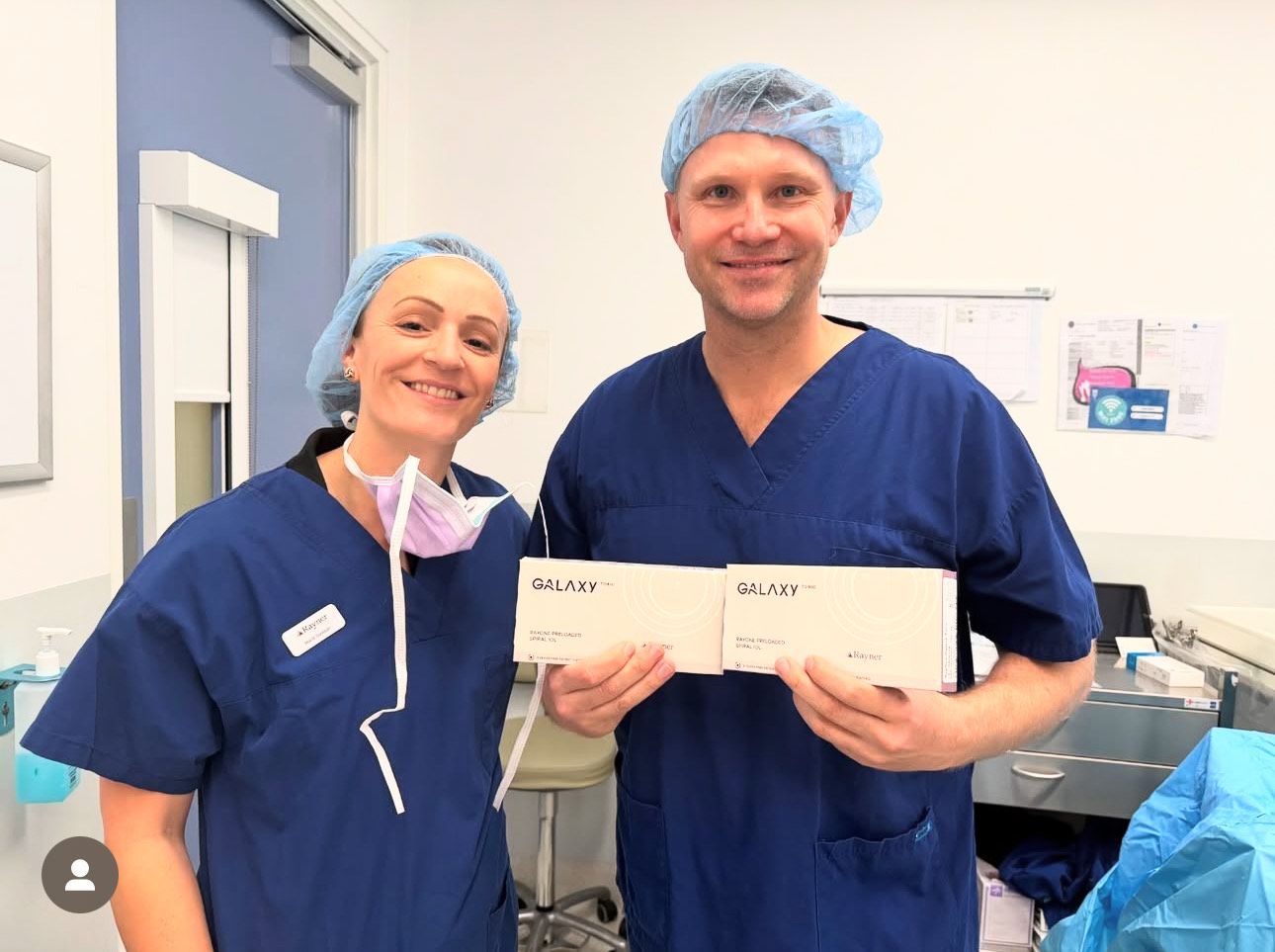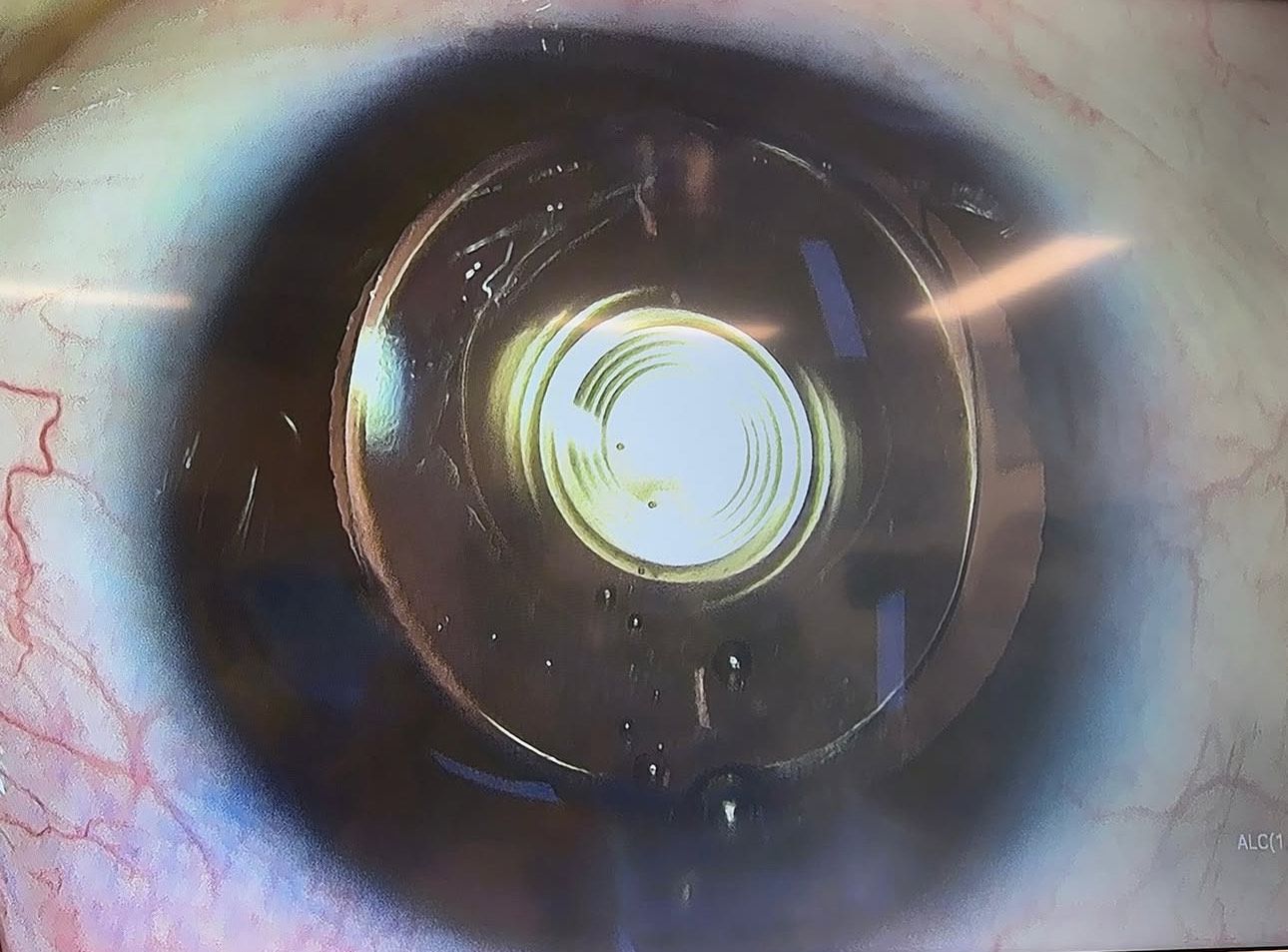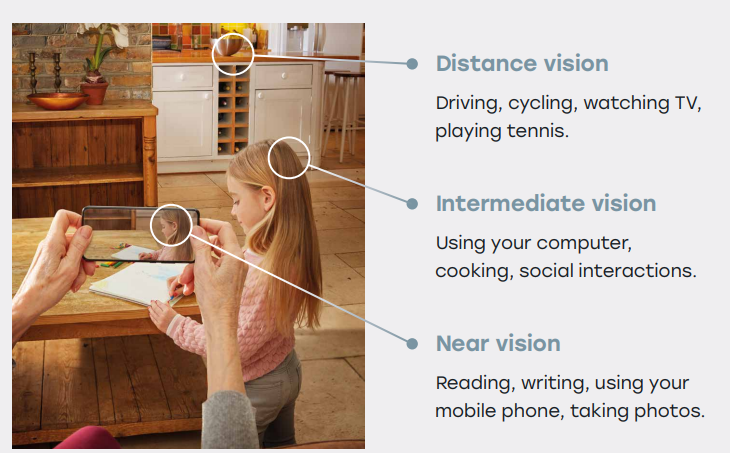
Cataract Surgery
Cataracts are a normal part of aging. About half of Australians aged between 50 to 80 have cataract formation of some degree. Factors like sun exposure, genetics and medication can influence the condition and cause early onset. It is not uncommon for me to see patients in their mid to late 40’s with cataracts causing visual symptoms.
Most people with cataracts have a cataract in both eyes. However, one eye may be worse than the other. Some people with a cataract, don’t even know it. Their cataract may be in the early stages, or the changes in their vision may not bother them. Some people who have cataracts cannot see well enough to do the things they need or want to do.
Symptoms of cataract includes:
- Blurry or foggy vision even with glasses
- Difficulty seeing at night and dim light conditions
- Colours changes with bright colours becoming dull
- Glare around artificial lights or especially when driving at night
- Reading becoming difficult or requiring a stronger reading add
- Constant changes in the prescription of your spectacles
- Loss of reading or near vision even with glasses
- Double vision not fixed with prescription glasses
How is cataract treated:
- A cataract needs to be treated with an operation.
- Modern cataract surgery has evolved as being the safest operation in medicine. and the tendency is to to do cataract surgery much earlier and not to wait for a cataract to be more advanced or “ripe”.
- However, just because you have cataract it does not mean it needs to be removed immediately.
- Cataract surgery can almost always be put deferred until you are unhappy with your vision.
- If you do have cataracts and do not wish to wear glasses, I will always advise cataract surgery and not laser eye surgery as it provides the best and a permanent solution for clear vision.
How Do I Decide Whether To Have Surgery?
Most people have plenty of time to decide about cataract surgery. Many people are motivated to have it earlier so they can reduce their dependence on glasses or contact lenses. I cannot make the decision to undergo surgery for you, but having a consultation with me will help you make an informed decision to undergo surgery or not.
Does your cataract affect your vision and your life?
Consider the statements below & whether they apply to you:
- Do you need to drive but there is too much glare from the sun or headlights?
- You do not see well enough to do the things you need to do at home or work.
- You do not see well enough to do things you like to do.
- Your glasses do not help you see clearly even for reading.
- Your eyesight is poor in general bothers you.
- You wish to be more glasses and contact lens independent.

Cataract Surgery steps:
I perform cataract surgery 100% with drop local anaesthetic applied to the eye. Unlike other centres in Western Australia, I do not use any needles to inject in the patient’s eye. I can also perform the surgery under general anaesthesia in certain circumstances on request if you are nervous. My aim is to keep the patient as calm and comfortable as possible for this life changing operation. A cataract operation takes around 10 to 12 minutes per eye to complete. I can also use the Catalys laser machine to make precise incisions and a perfectly round opening in the natural lens for superior visual outcomes.
Each eye is operated separately on different days but I can always accommodate my patients who wants both eyes to be operated at a time. Bilateral same day cataract surgery is a very safe and well established option.
Cataract surgery is done at a day surgery as an outpatient procedure. You will have surgery and return home the same day to recover.
List of Services
-
Step 1:Item Link List Item 1
- I create a small 2mm self-sealing entry point in the front of the eye. The Catalys can also be used for this part
-
Step 2:Item Link List Item 2
- I expertly create a circular opening, either manually or with the Catalys in the front part of your natural lens.
-
Step 3Item Link List Item 3
- The natural lens is painlessly removed
-
Step 4:Item Link List Item 4
- A new artificial lens is placed in the eye.
Visual recovery usually takes 2-3 days where patients can drive or fly again.
Advantages of Cataract Surgery:
- Clear vision that can eliminates the need for glasses and contact lenses
- Highly predictable visual outcomes
- Gives patients access to premium lens technology to eliminate even reading glasses
- Lens technology can be customised to the patient’s visual needs
- Surgical costs covered by Health Insurance and Medicare
- Excellent vision , mostly spectacle free in the twilight of your life
- Removes all risks that can occur with contact lens wear
- The operation is done in a day surgery and recovery is at home
- No risk of worsening dry eyes
- Long term financial savings eliminating the need for constant optometric assessments, new glasses or contact lenses, contact lens solutions etc
- Prolonging life as it prevents trauma events associated in older age like falls
- Mental health improvements. Cataract surgery has been shown to improve depression
- Reduces the risk of falls and trauma significantly
- Allows a patient to maintain their freedom to drive

Lens options in Cataract Surgery:
Patients undergoing cataract surgery has exactly the same access to premium lenses as patients undergoing a
Refractive Lens Replacement.
Not everyone is the same and not every patient has the same visual requirements. There are various different lens types available on the market to suit every individual.
I will perform an extensive and comprehensive analysis of your eyes, lifestyle and occupational needs to determine the best lens suited to you as an individual.
I will tailored your lens type to your specific needs and goals.
As a rule of thumb, the more spectacle free a patient wants to become, the more nighttime glare and quality of vision issues a patient will have. This is because as the range of a lens increases, the more extra optical properties a lens has. This can compromise your quality and night time vision.
Spiral Optics Lenses:
Spiral optics intraocular lenses are the latest technology intraocular lenses (IOL’s) available to patients, using revolutionary spiral optic technology to precisely manage the light entering your eye.
I was the first surgeon in Western Australia to implant this specific technology lens and was one of 10 surgeons worldwide to be requested by the company producing these lenses to conduct outcome research. I am also the surgeon in Australia who have implanted the most spiral optics lenses to date as I regard these lenses as the closest we have available to the “perfect” lens.
These IOL’s are designed to provide you with high quality distance, intermediate and near vision without glasses.
What makes Spiral Optics lenses different to Multifocal lenses?
- With advanced IOLs, it can be normal to experience visual disturbances such as halos and glare around car lights and streetlamps at nighttime. These visual disturbances typically reduce over time thanks to brain adaptation, however, the RayOne Galaxy’s patented optic is specifically designed to significantly reduce those visual disturbances from the outset.
- Multifocal lenses lose some of the available light when it enters your eye, causing a small change in your vision when in dimmer light levels. Spiral optics lenses however sends 100% of the available light to the back of your eye (the retina) so that you do not lose any brightness in your day-to-day vision.
An example of a Spiral Optics intraocular lens in the eye
What you can expect to see with a Spiral Optics IOL following surgery
The picture on the left shows the glare and haloes expected following the implantation of Multifocal lenses
The picture on the right shows the significantly reduced nighttime glare and haloes expected with the implantation of Spiral Optics lenses
What you can expect to see with a Spiral Optics IOL following surgery
Monofocal Lenses:
As the word “mono” (one) implies, monofocal lenses has only one focal point. These lenses can either be focussed for distance vision or near vision in both eyes.
Monofocal lenses as a rule do not cause nighttime glare and halo complications and the contrast sensitivity or quality of vision is not compromised

Example of a clear monofocal lens. These lenses have no extra properties and can either be focussed for distance or near vision- not both
Monofocal PLUS Lenses:
Monofocal PLUS lenses are highly versatile intraocular lenses that induce natural optical properties known as l spherical aberrations to enhance the depth of focus. In other words a single focal point with a little bit of extra range of vision around it.
As these lenses has a range of vision they can be implanted with different focal points in each eye giving patients “Pseudophakic Blended Vision”- very similar to
Presbyond.
Monofocal PLUS lenses do not cause glare symptoms at night and contrast or quality of vision is not affected
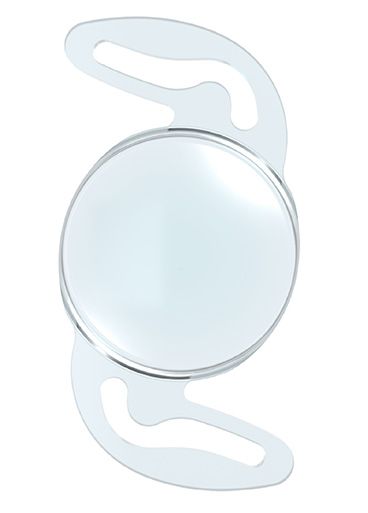
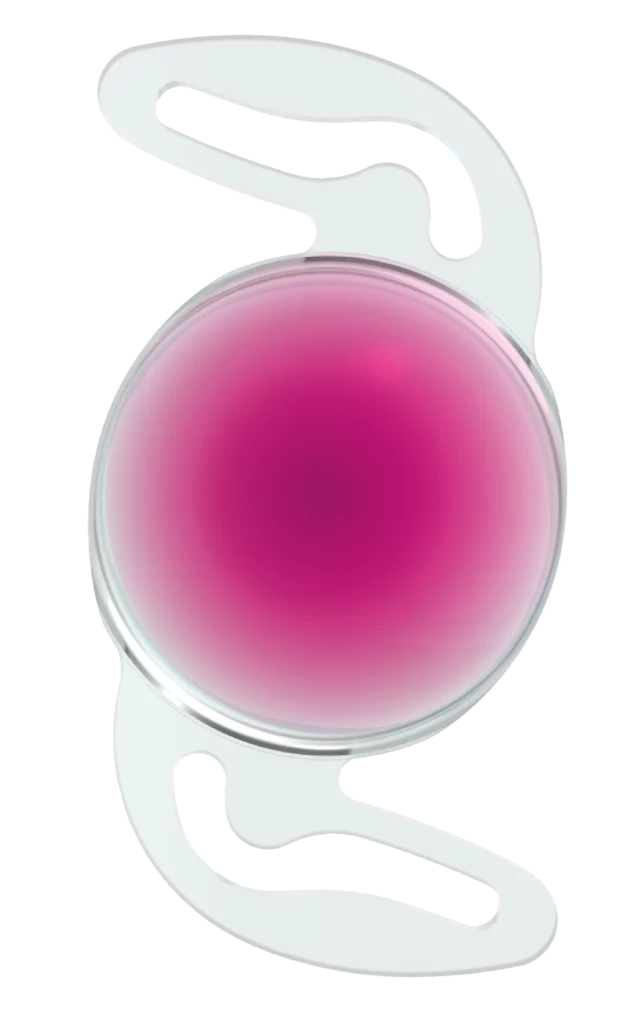
Example of a monofocal PLUS lens. These lenses have internal properties which induced natural optical phenomena known as spherical aberrations which enhances the patient’s depth of field
Extended Depth of Focus Lenses:
Extended Depth of Focus or EDOF lenses are the most modern type of lenses that can achieve spectacle independence.
EDOF lenses elongates a single focal point and gives an extra range of vision of 1.5-1.9 optical units or more.
These are extremely versatile lenses that can be implanted at various focal points to achieve spectacle independence.
EDOF lenses can also be used for Pseudophakic Blended Vision with an enhanced range with what is possible with Monofocal PLUS lenses.
EDOF lenses do cause night time glare though it is minimal and studies shows that most patients become accustomed to it over time.
Contrast sensitivity or quality of vision is minimally affected by EDOF lenses.

An example of an EDOF lens with extra properties in the lens to elongate the focal point
Multifocal Lenses:
Multifocal lenses give patients distance, intermediate and excellent reading vision without the need for reading glasses.
Multifocal lenses have rings (known as diffractive rings) in the lenses which splits light into 3 focal points, one for distance, one for intermediate and one for near vision. These lenses are general known as Trifocal lenses as they have 3 distinct focal points
With multifocal lenses patients are able to read small text comfortably without the need for reading glasses.
Because multifocal lenses have rings in them, they can cause glare and halo symptoms at night time.
Multifocal lenses are aimed at distance in both eyes.
Due to the rings and light splitting technology, both eyes can see distance, intermediate and near.
The advantage of multifocal lenses is that both eyes do not need to be focussed at different points.
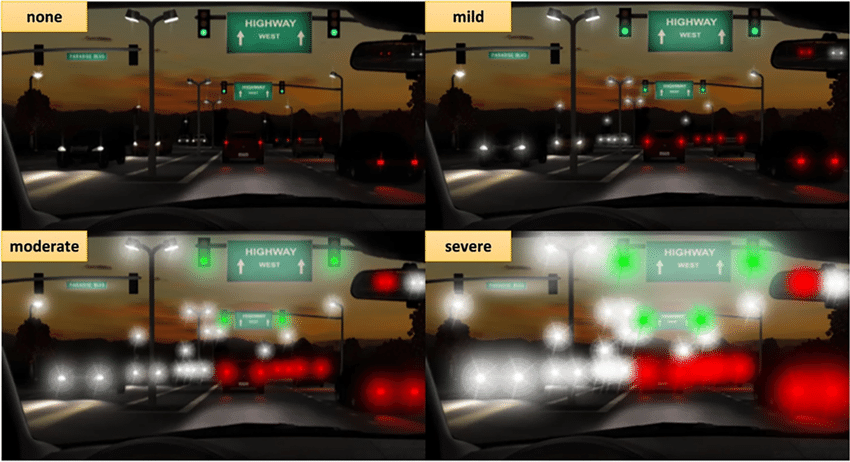
Glare and haloes induced at night time by multifocal lenses
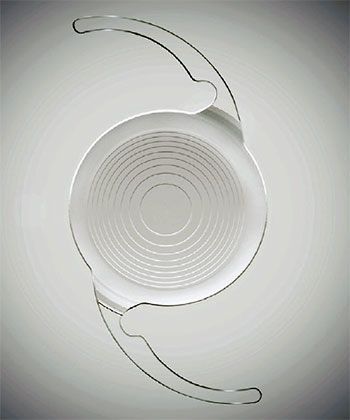
Example of a Multifocal lens with diffractive rings
LIFESTYLE CATARACT SURGERY
In many instances patients opt to undergo early cataract surgery. In modern cataract surgery you do not have to wait for a cataract to “ripen”.
Benefits of early cataract surgery:
- Complication rates are reduced significantly
- Patients enjoy better and clearer vision for a much longer period
- Poor visual outcomes are significantly reduced
- Clearer vision is achieved
- Patients become glasses independent
- Significant financial savings and benefits over time
Studies even shows that there are several health advantages to early cataract surgery:
- People undergoing cataract surgery early in life live longer
- Mental health improvements
- Less trauma especially falls in older age
Suitability Criteria for Lifestyle Cataract surgery:
- Any patient with early diagnosed cataract
- Any patient who’s optometrist has diagnosed cataract but who’s told to “wait”
- Any patient diagnosed with “a little bit” or “early” cataract”
- 50 years or older but exceptions can be made if cataract is present at a younger age
- Patients with cataract who have a desire to be glasses independent
- Any patient who is NOT suitable for Presbyond or LASIK due to early cataract
- Patients who cannot adapt to multifocal glasses
- Patients completely dependent on reading glasses or multifocal glasses
- Any patients who has a desire to be glasses independent
My Mission Statement:
I am dedicated to providing the best clinical expertise and the highest standard of care.
This is on a personal and professional level, to give all my patients of all ages the best opportunity for a lifetime of healthy eyes and excellent vision.
Over the past 20 years I have had the absolute pleasure of helping tens of thousands of patients of various ages improve and maintain their vision. Helping patients to free themselves from the burden of glasses and contact lenses is my passion.
To perform microsurgery on the eyes requires exceptional surgical skill and acumen. To perform all types of eye surgery and any other ocular surgery at a world class level requires expertise along with access to state of the art and the world’s best equipment. For this reason I have spent a total of 17 years training and perfecting my surgical armamentarium and spared no cent to acquire the best and most advanced diagnostic, surgical and laser equipment in the world to provide my patients with world class care.
I understand that getting surgery, especially on your eyes, is a serious decision and can cause anxiety in some. Your eyes are unique, and you should demand a bespoke solution tailored to your lifestyle, visual requirements and goals. That is why I offer the most thorough and intense medical examination and consultation that any patient will ever go through. During your consultation we will meet, and I can take the time to answer all your questions and talk through any concerns you have.
I am passionate about transforming people’s lives by transforming their vision. I look forward to spending time with you at our stunning and state of the art clinics in Booragoon and Craigie to see whether you could gain exceptional vision and eye health
MBChB, DipOphth, FCOphth, FRANZCO, MMed (Ophth), FRCSI, FEBO, GradDip(RefCatSurg), MMed(RefCatSurg), FWCRSVS

Why Choose Me?
More than 20 years of ophthalmological experience
Tens of thousands of satisfied patients
A professional team dedicated to the best outcome for your eyes
Exceptional reviews and word of mouth recommendations
Get in touch with my team
Whether you are ready to take the plunge into a world of crystal clear vision, or just have a few questions for me, feel free to drop me a line.
Own your Vision today!
.
Contact Us
We will get back to you as soon as possible.
Please try again later.
Happy Patients
I'm proud to have earned glowing reviews from patients who I've helped own their vision allowing them to enjoy a life free from the constraints of glasses and contact lenses. I'm humbled by the the overwhelming positive online reviews on Google.


All Rights Reserved | Lourens van Zyl
